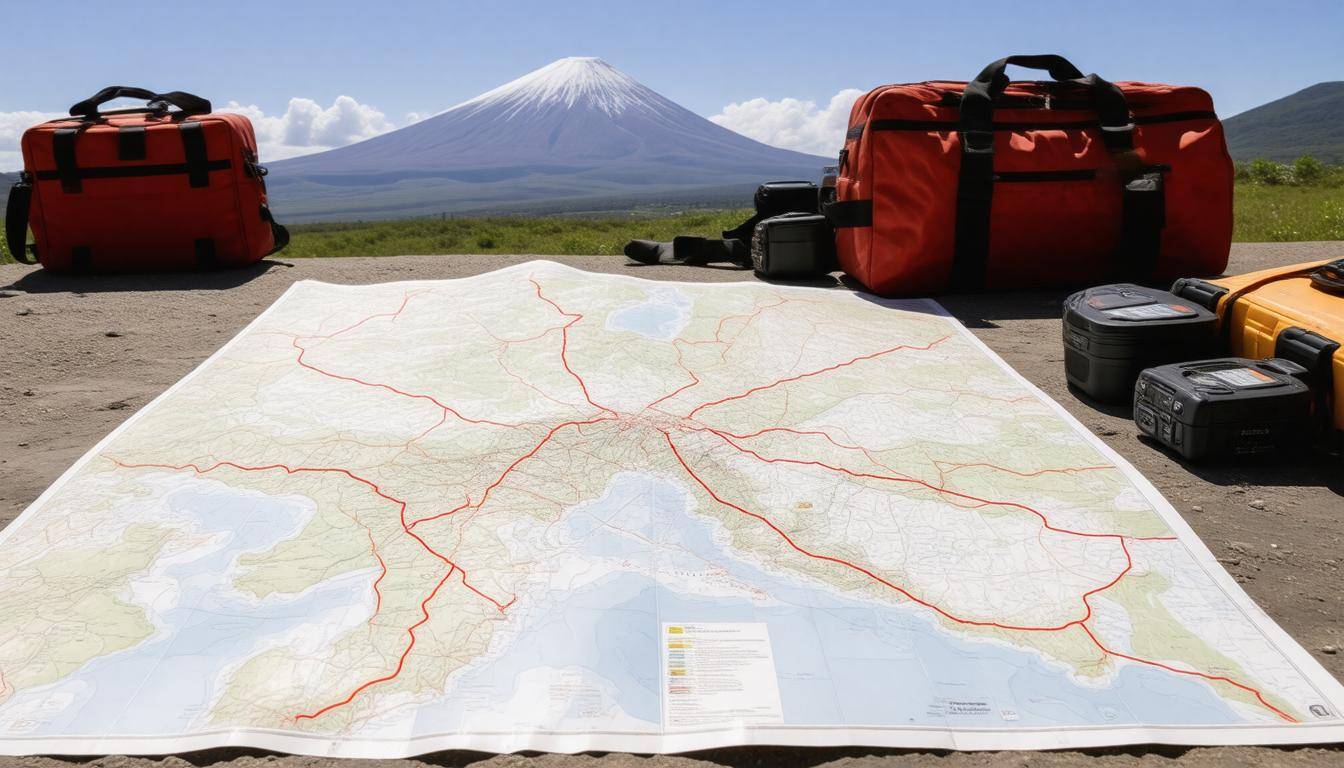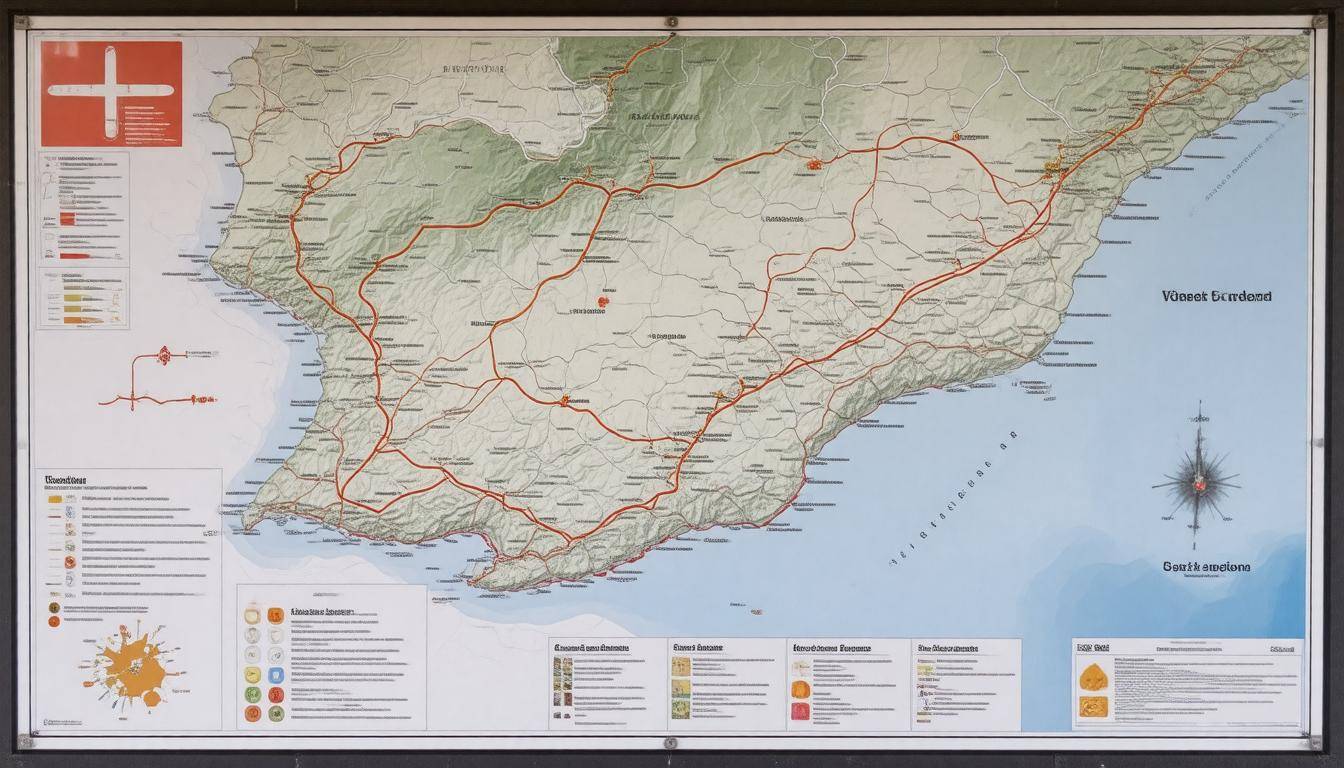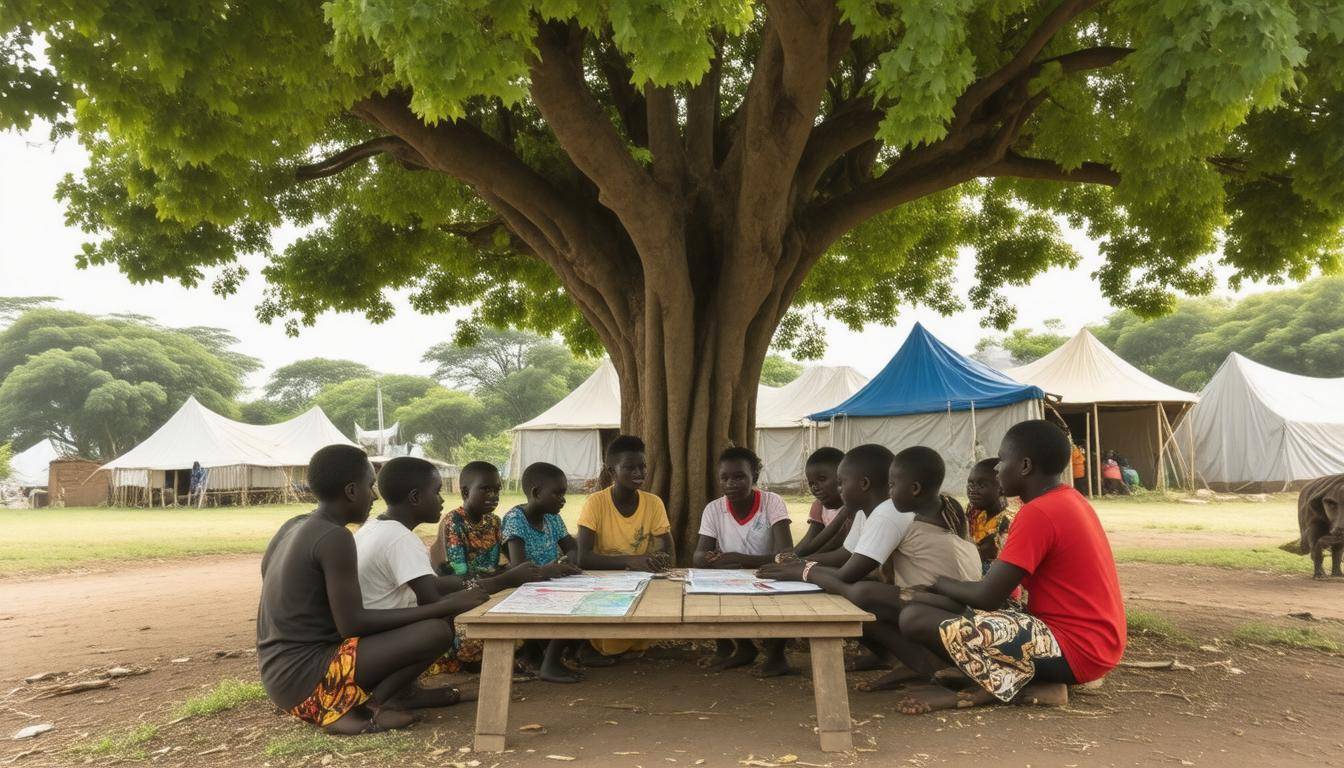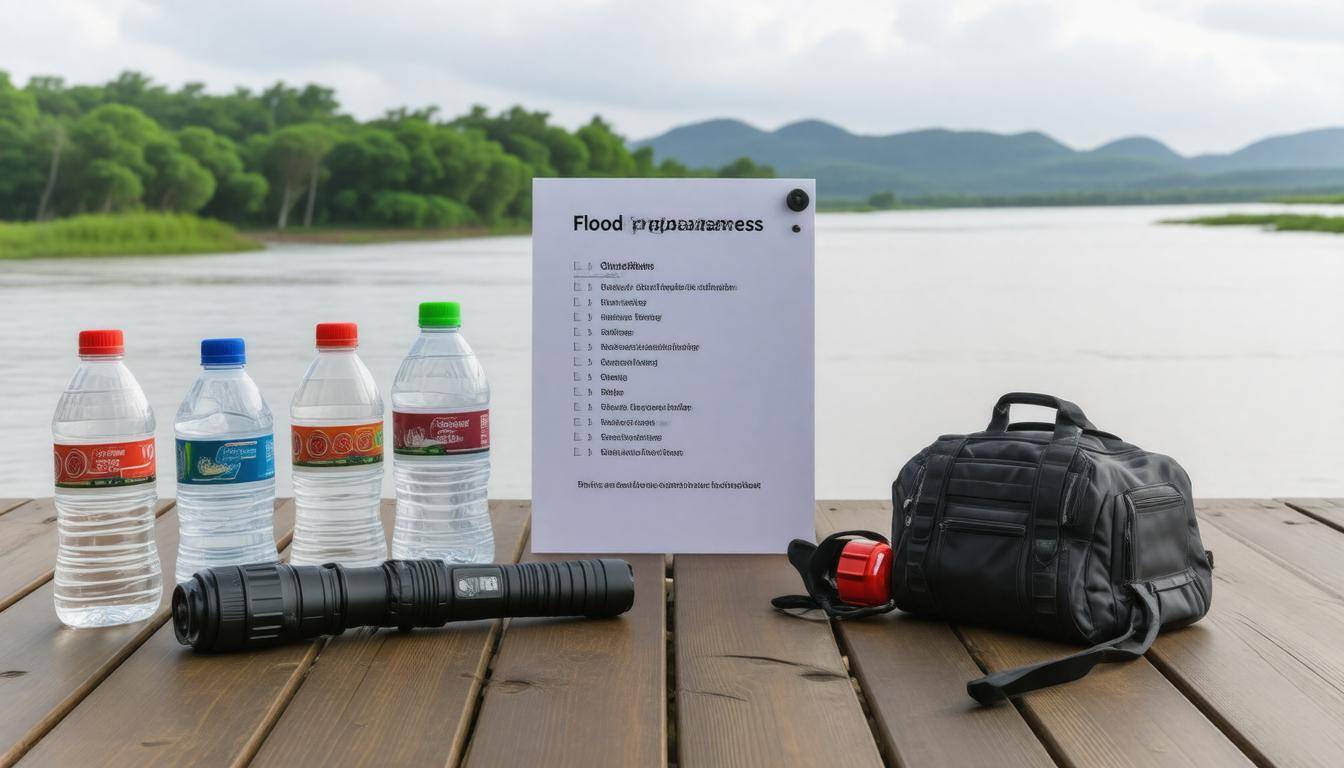Volcanic eruptions can happen without warning, transforming peaceful landscapes into scenes of chaos in mere moments. For the people living near Mount Cameroon, this reality can be scary, yet understanding how to prepare for an eruption is essential. Imagine knowing exactly what to do and where to go when the ground starts to shake beneath you. This article will outline not just the risks associated with volcanic activity in Cameroon but also practical steps residents can take to ensure their safety and well-being during such emergencies. By working together, we can build a community that’s ready to respond effectively when nature throws a surprise our way.
A comprehensive Cameroonian volcanic eruption emergency plan should include established evacuation routes, public awareness campaigns about volcanic risks, real-time monitoring systems to detect early signs of activity, and coordinated response strategies involving local governments and international agencies. It is essential to ensure that communities are educated about emergency protocols for effective disaster preparedness.

Cameroon Volcanic Risk Overview
Cameroon is indeed a country steeped in volcanic activity, with Mount Cameroon standing as a compelling reminder of nature’s unpredictability. Nestled near the coastal city of Limbe, this stratovolcano has an eruption history that stretches back centuries, emphasizing its inherent danger. The geology of this region places it right on top of tectonic plate boundaries, making it one of Africa’s most volatile locations.
The 1986 Lake Nyos incident serves as a chilling benchmark for understanding the potential consequences of volcanic eruptions. This tragedy not only took 1,746 lives but also reflects the imminent danger from limnic eruptions, where gases build up under pressure in lakes and can escape suddenly, killing everyone in proximity. Such incidents underline the importance of developing effective emergency plans that specifically address the unique geographical challenges faced by communities living close to active volcanoes.
Between 2000 and 2020, Mount Cameroon erupted four times. Although this may seem infrequent, these eruptions signify an ongoing period of activity and necessitate rigorous continuous monitoring and preparedness efforts. Historical records have shown that past eruptions have caused substantial damage to property and loss of life due to both explosive eruptions and harmful gas emissions.
It’s not just the immediate threat of eruptions we must consider—volcanic health hazards compromise air quality over vast distances through ash clouds and toxic gases, reminding us that even those residing far from the volcano are not immune to its effects.
Understanding these risks arms residents with vital information, enabling them to participate in essential planning conversations regarding emergency evacuations and response strategies. For instance, knowing evacuation routes ahead of time is crucial; average evacuation times for individuals living within high-risk zones are estimated to be as short as thirty minutes. Thus, devising clear evacuation protocols can literally be a matter of life and death.
With these considerations in mind, we can now explore essential actions residents should take when facing volcanic threats.
Immediate Resident Actions
First and foremost, residents must be vigilant in listening to warnings. Staying informed can mean the difference between safety and disaster. Local radio stations and government announcements provide real-time updates, so it’s essential to keep those channels open and check them frequently.
Familiarizing yourself with these alerts ensures that you’re not only aware of the risk but also the directives that might arise during an emergency. Adding a family meeting point away from danger zones in your discussions helps ensure everyone knows where to go in case you get separated.
Use Prepared Kits
Now, moving on to the practicality of having a well-stocked emergency kit. Creating and maintaining your kit—a simple yet powerful step—is vital. Your emergency kit should contain at least 72 hours of essentials, which includes:
- One gallon of water per person per day
- Non-perishable food items like granola bars or canned goods
- Medications for any ongoing health concerns
- Copies of important documents (think identification or health insurance cards)
- Masks to protect against ash inhalation.
It’s advisable for each household member to have their own personal kits tailored to their needs. Having this kit packed and ready means you’re not scrambling for supplies when time is of the essence.
Protect Yourself
Additionally, protecting yourself from immediate hazards during an eruption is paramount. If you find yourself outdoors when the eruption occurs, use a cloth or piece of clothing to cover your nose and mouth; this simple act can help filter out harmful ash particles.
It’s also critical to move to higher ground if possible to avoid lava flows or mudslides resulting from the eruption’s impact. Stay calm and keep an eye toward the safest exit routes—knowing those routes ahead of time sharpens your response abilities dramatically.
Once immediate actions are taken, having designated pathways for escape becomes imperative in ensuring safety during a volcanic event. Every second counts in such emergencies—being prepared mentally and physically will strengthen your ability to navigate dangers efficiently while keeping yourself and your loved ones safe.
Evacuation Routes and Safety Precautions

Well-established evacuation routes are nothing short of lifelines during volcanic eruptions. When the earth rumbles beneath our feet, knowing where to go can save lives. Local authorities must prioritize crafting and maintaining multiple evacuation paths that guide people away from danger zones. These routes should be clearly marked and regularly reviewed to ensure they remain accessible under adverse conditions.
Safe Paths to Follow
Imagine this: you’re facing an imminent eruption, and the roads you normally use are blocked or impassable. In such a critical moment, pre-planned evacuation routes become essential. Authorities need to establish designated paths that weave through areas least likely to be affected by lava flows or other volcanic hazards. Consistent mapping and signage along these routes will help guide evacuees when panic sets in. Regular drills involving local communities can also ensure that everyone becomes familiar with these escape paths, making it easier and safer to follow them when the time comes.
Knowing where to go is just one part of the equation; we also need to consider how to stay safe while evacuating.
Safety Precautions
As volcanic eruptions can present numerous hazards, following established safety protocols is equally important for ensuring everyone’s safety. First, it is vital to avoid low-lying areas where lava flows might accumulate dangerously. Staying elevated protects you from sudden lava surges as well as keeps your exit clear of potential debris.
In addition, sticking closely to designated escape routes minimizes the risk of getting lost amid confusion and chaos. Timing is everything; keeping a cool head while moving swiftly toward safety can be the difference between disaster and survival. It’s also crucial to prepare for scenarios where traditional methods of transportation may fail—like blocked roads. If faced with this reality, evacuating on foot becomes necessary. This requires wearing sturdy shoes that provide protection from sharp objects or heated surfaces, as well as protective clothing for warmth and coverage against ashfall.
Having these pathways well-marked and clearly defined helps facilitate a quick and orderly evacuation during dire situations. Each minute saved could potentially save lives while ensuring people make it safely out of harm’s way.
Taking the time now to understand evacuation routes and adhere to safety precautions will create a familiar landscape that transforms chaotic moments into structured actions guided by clear thinking — helping us navigate away from danger efficiently when it matters most.
As we shift our focus, it’s important to consider how government agencies play a pivotal role in coordinating efforts during such emergencies.
Role of Government Authorities
Government agencies are the backbone of coordinated disaster response efforts, especially during natural disasters like volcanic eruptions. The Cameroonian Ministry of Territorial Administration takes on a leadership role by crafting and implementing comprehensive disaster management policies. These policies serve as a framework for action, providing guidelines and strategies that local governments can adopt based on their unique contexts.
However, it’s the local authorities that bring these strategies to life through quick action and localized knowledge.
Local governments are responsible for mobilizing immediate evacuation plans, ensuring that residents are aware of safe routes and available shelters. Their familiarity with the community allows them to communicate effectively with citizens, often using local media to disseminate critical information swiftly. During a crisis, time is of the essence; therefore, having local authorities who can act quickly is indispensable.
In emergencies, past performance from governmental agencies has shown mixed results, as observed during the 1999 volcanic eruption. While some communities received timely assistance, others found themselves under-resourced or lacking communication regarding safety measures. This inconsistency highlights not only the importance but also the need for improved coordination among various agencies involved in disaster response.
Additionally, collaboration between government agencies and international organizations can enhance response efficacy. Agencies may partner with groups like IOM (International Organization for Migration) to leverage additional resources such as funding and expertise in managing disaster scenarios.
How can we ensure that these partnerships are functional and beneficial? Regular training sessions and simulations can be implemented to prepare both government personnel and community stakeholders for potential disasters. These exercises foster collaboration between local authorities and international partners, making them more adept at handling real-life situations.
Furthermore, monitoring and evaluating past responses can lead to continuous improvement. By analyzing what has worked well, as well as the areas needing improvement, agencies can refine their approaches over time. This feedback loop is essential for adapting strategies to better meet community needs while maximizing allocated resources.
As we explore further into this complex issue, the focus will shift towards understanding how information flows during emergencies and how it can be effectively managed to support disaster response efforts.
Communication and Information Management
Effective communication is not merely an ancillary component of emergency preparedness; it is at the heart of a successful response strategy during volcanic eruptions. When disasters strike, information can be the lifeline that guides communities to safety, minimizing confusion and preventing panic. This is why implementing a robust communication system is imperative for public safety.
A combination of channels—like SMS alerts, social media platforms, and traditional radio broadcasts—creates a multi-faceted approach to disseminating timely warnings about volcanic activity. Each channel serves its purpose and ensures that every segment of the population receives crucial information in ways they can access.
Community Alerts
-
Text message notifications provide real-time updates and critical information to residents. This direct line of communication can alert families to imminent threats, allowing them to act swiftly.
-
Regular radio bulletins cater to those without internet access or who may not own smartphones. Radio remains an invaluable tool for reaching remote populations, ensuring that no one is left in the dark.
-
Social media updates from official government accounts enable rapid dissemination of information to a broader audience, helping to counter misinformation while providing reassurances when needed.
By improving communication systems, authorities can keep residents informed and effectively guide them on necessary precautions or evacuation routes without delay.
Additionally, training community leaders in effective messaging can enhance local trust in the information being communicated. Engagement with local stakeholders fosters a participatory approach where residents feel empowered and involved in disaster readiness activities. Tailoring messages that resonate culturally and contextually with diverse populations enhances this engagement.
Through these combined efforts, communication becomes more than just a relaying of information—it transforms into a powerful tool that reinforces community resilience during crises. Ensuring that everyone knows what to do and when to do it can save lives and enhance the effectiveness of evacuation strategies when faced with the threat of a volcanic eruption.
With communication systems in place, it’s vital to explore how long-term strategies can further minimize risks and bolster community security over time.
Long-term Risk Reduction Strategies
Reducing the long-term risks associated with volcanic activity at Mount Cameroon involves more than just immediate responses—it calls for thoughtful planning and proactive investments. One key aspect is enhancing our understanding of volcanic behavior through rigorous scientific research. This means not only investing in early warning systems like seismic monitoring equipment but also ensuring public education programs accompany these technologies. By fostering awareness and knowledge within communities, people can better understand the alerts they receive and the actions they need to take when faced with potential danger.
Monitoring Technologies
The installation of advanced seismographs and gas emission detectors around Mount Cameroon has already proven effective in predicting eruptions, providing critical data that can inform evacuation plans and risk assessments. However, it is vital to remember that technology alone isn’t sufficient. These monitoring systems require consistent maintenance and timely upgrades to remain accurate and functional. Furthermore, integrating historical eruption data into these systems can enhance predictive capabilities. Communities should be educated about how these technologies work—this will empower them to trust their information sources and the actions they may need to take based on monitoring data.
Imagine a community aware of its volcano’s signs; when alarms ring out, rather than fear taking over, knowledge guides their movements. By turning information into action, lives are saved.
Land-Use Planning
In addition to monitoring technologies, strategic land-use planning plays a pivotal role in mitigation strategies. Limiting construction in high-risk areas surrounding active volcanoes not only reduces potential damage during an eruption but also protects the environment and local lifestyle. Developing buffer zones helps minimize future catastrophes by creating safe spaces that can absorb lava flows or ash fallout without seriously impacting human life or property.
To implement such strategies effectively, strict enforcement by local authorities is crucial. This means establishing clear policies regarding where new developments can occur and maintaining oversight to ensure compliance. Engaging with community leaders, particularly those who hold significant influence among indigenous populations, creates a collaborative approach to disaster preparedness.
By combining these elements—technology deployment, public education, and responsible land management—we build a resilient society capable of adapting to the risks posed by volcanic eruptions. Each component reinforces the others; educational efforts can improve compliance with land-use regulations while technology enhances awareness of imminent threats.
As we consider these foundational strategies for risk reduction, it’s equally important to highlight the impact of community engagement in building robust support networks that can enhance overall resilience against volcanic threats.
Community Involvement and Support Networks

Community involvement is not merely an option; it is essential for enhancing the effectiveness of emergency response strategies. Individuals within a community form a network that, when engaged, can significantly improve both preparedness and resilience in the face of potential disasters. The phrase by Dr. Awa Mangie Achu Samba resonates deeply: “Communities that are educated and have practiced evacuation drills are more resilient.” This highlights the indispensable role education and practice play in shaping informed communities ready to act when faced with a crisis.
Consider this: when individuals know their neighbors, they become more inclined to support one another during emergencies. Establishing local volunteer groups can create a ripple effect of positivity where members disseminate critical information and assist those who may need extra help—such as the elderly or those with disabilities—during evacuations. These networks foster relationships that enable people to feel more secure and connected, coupled with the readiness to assist each other when frustration levels run high.
One effective strategy is setting up regular community meetings focused on disaster preparedness. During these gatherings, participants can learn about volcanic risk factors specific to their region and how to respond effectively. Families may also practice evacuation routes together, making the process feel less daunting when it arises in real life. This not only strengthens individual readiness but also builds camaraderie among community members.
These exercises reinforce knowledge retention while creating valuable interpersonal bonds that provide moral support during a stressful situation.
Moreover, such gatherings could serve as a platform for knowledgeable professionals—like local health officials or disaster response experts—to share insights tailored specifically to volcanic risks. Incorporating educational materials regarding evacuation protocols, safety measures, and self-care in emergencies are practical steps in empowering communities to take action efficiently.
Another way to promote community cohesion is through social media platforms or neighborhood apps centered around emergency preparedness. These tools allow community members to share timely updates, offer assistance, or broadcast alerts about changing conditions based on official recommendations from local agencies. This immediacy enhances the dialogue within neighborhoods and creates spaces for collaboration before disaster strikes.
As communities band together in readiness, they lay down a foundation for effective emergency management that will be crucial when seeking out resources for support in times of need. With proactive involvement, the stage is set to tap into available supports designed to enhance preparedness further.
Emergency Preparedness Resources
Access to appropriate resources during a crisis can often mean the difference between chaos and effective management. For volcanic eruptions, having essential supplies on hand not only supports immediate evacuation efforts but also provides crucial assistance in the aftermath. It’s important to consider everything from shelters and medical aid to less visible yet equally significant aspects like mental health support. Proper planning and preparation create a safety net for communities at risk.
Available Shelters
| Shelter Location | Capacity | Facilities Available |
|---|---|---|
| Limbe Stadium | 1,200 | Food, water, bedding |
| Buea High School | 800 | Medical aid, meals |
| Kumba Hall | 500 | Sanitation, blankets |
These shelters serve as safe havens during volcanic eruptions, providing essential services such as clean water and nutritious food. They are organized not just for sheltering but also to support the emotional and psychological well-being of evacuees. Communities affected by disasters like volcanoes often experience stress and trauma; having pre-designated areas that offer both physical safety and access to supportive services helps restore a sense of normalcy.
However, it’s not just about immediate physical resources; thinking ahead about mental health support is equally crucial.
Post-disaster mental health resources allow individuals and families to process their experiences. Programs offering counseling or psychological first aid should be integrated into community disaster plans. This type of support ensures that after the immediate threats dissipate, the focus shifts towards fostering resilience in individuals who have faced loss or displacement.
Collaboration with local NGOs and international organizations can facilitate the establishment of these crucial programs. By engaging professionals who specialize in mental health responses during crises, communities can ensure that residents receive compassionate care while addressing the emotional challenges after an eruption or similar disaster.
Additionally, these mental health initiatives should be promoted alongside other practical resources. Strategic communication about available services plays a key role in successful recovery. Ensuring that communities know where to find help—whether it’s for displaced persons or those struggling emotionally—leads to a quicker pathway toward resilience.
As we explore emergency preparedness further, it becomes clear that resource mobilization is more than just logistics; it’s about creating a robust network of support for entire communities before, during, and after disasters strike.
In summary, establishing an effective emergency plan for volcanic eruptions encompasses not only evacuation strategies but also comprehensive support systems that address both physical safety and mental well-being. Prioritizing these elements can dramatically improve outcomes for all affected individuals.











